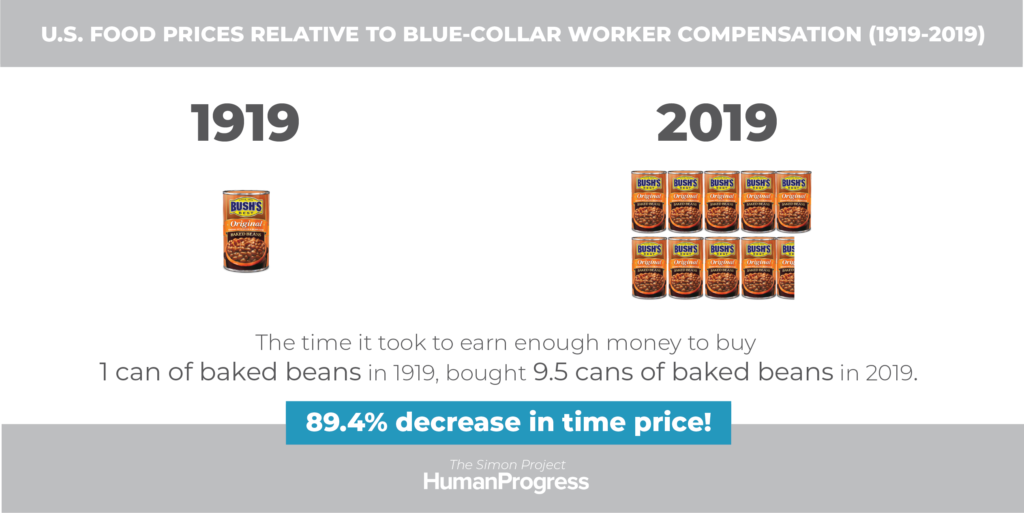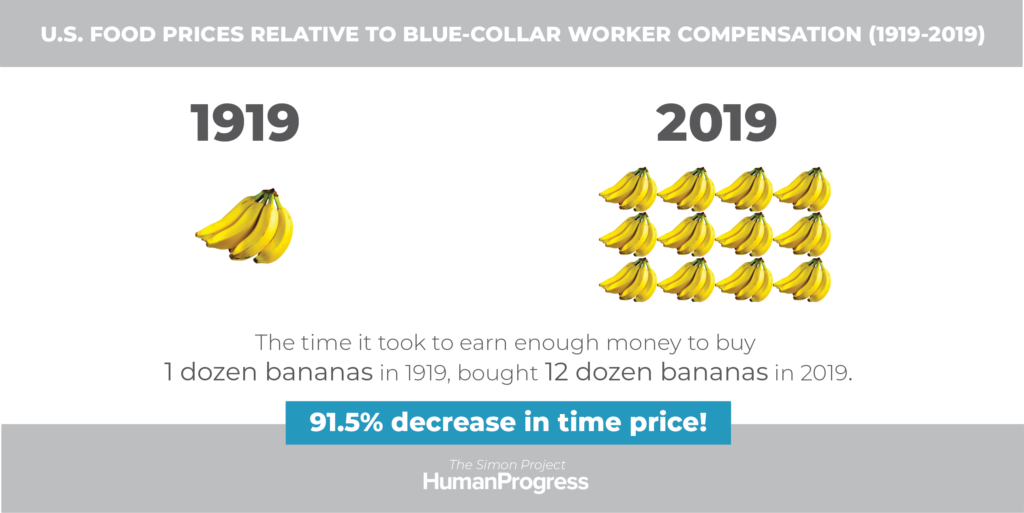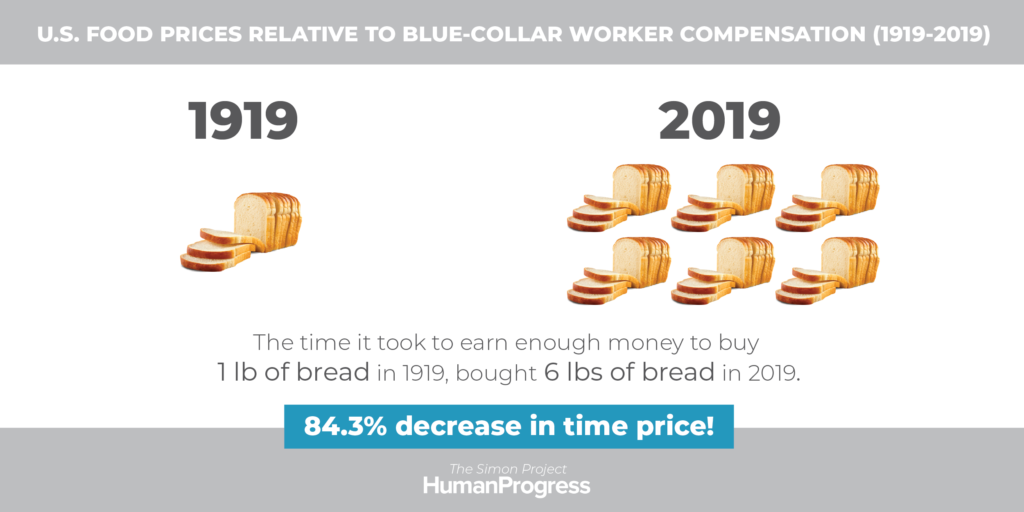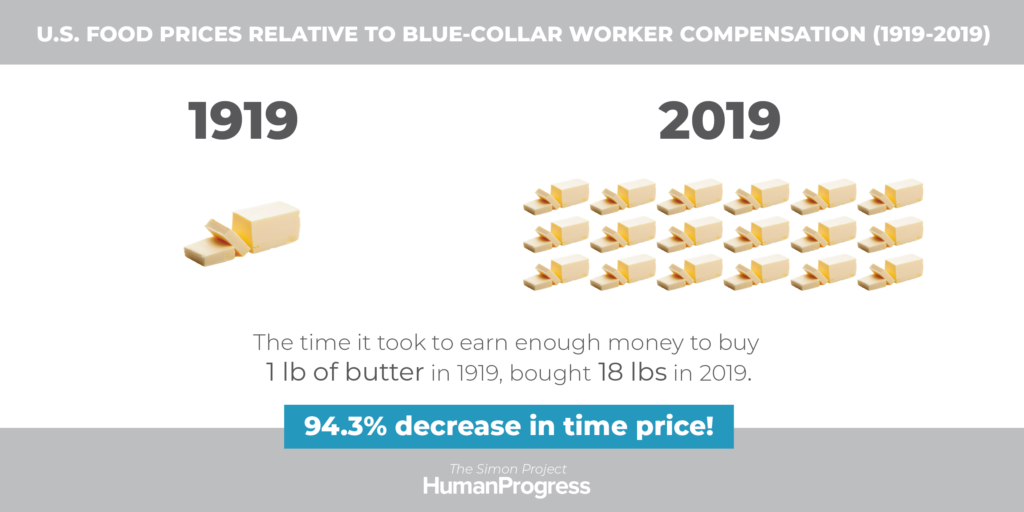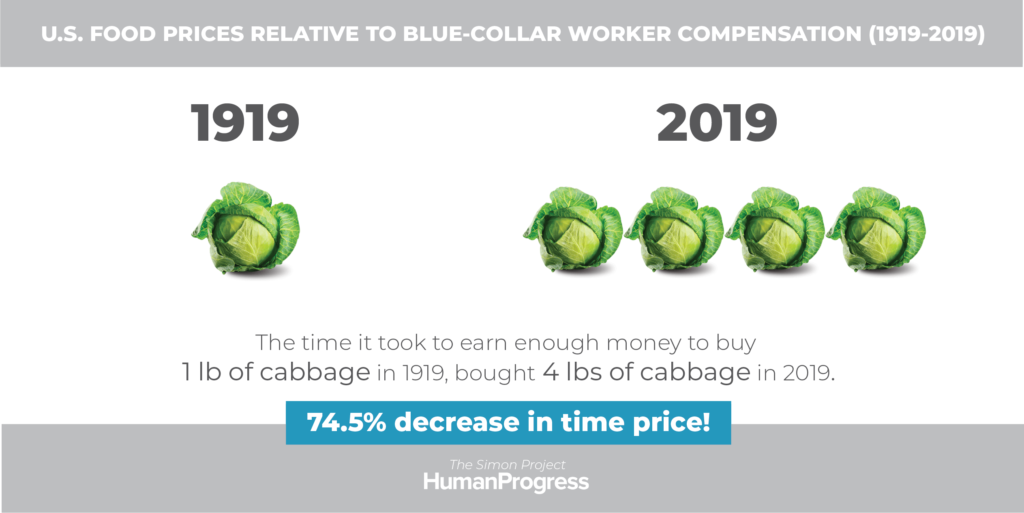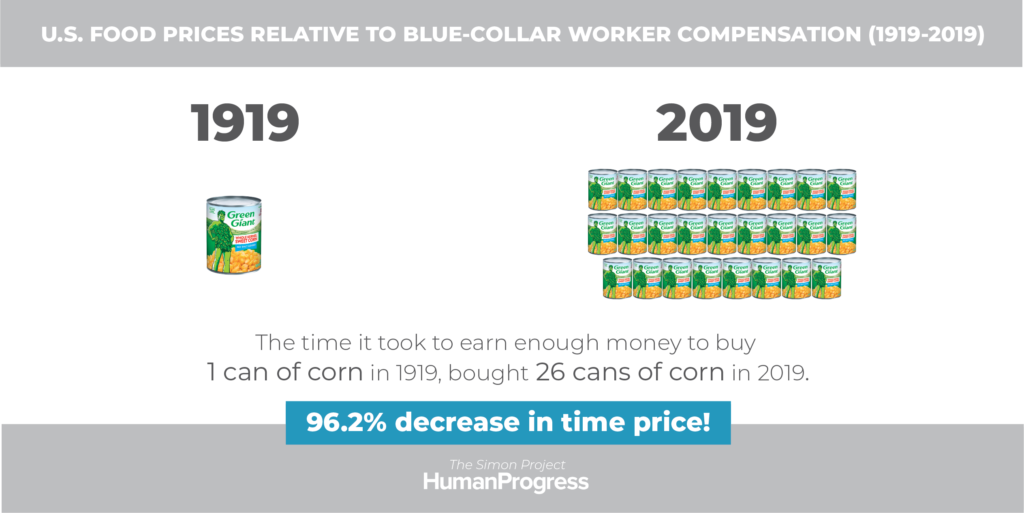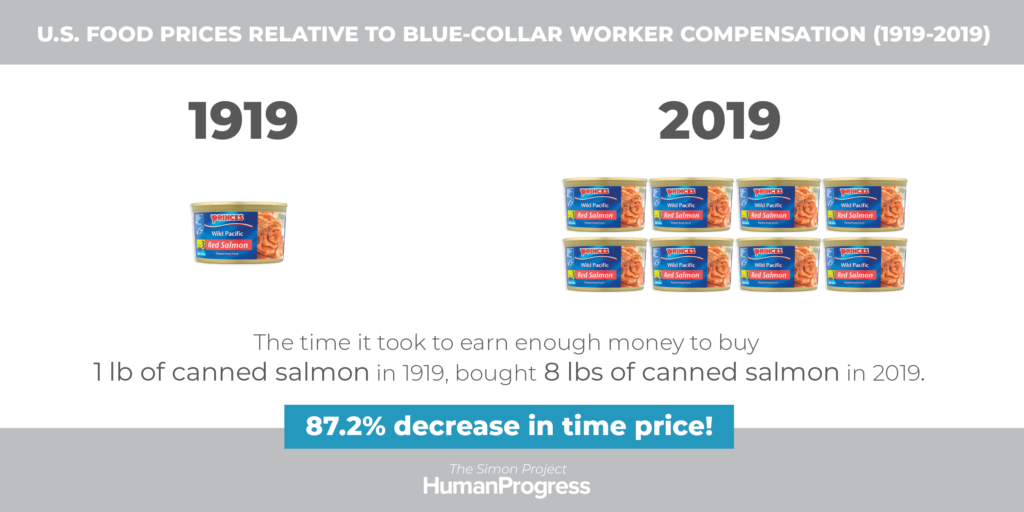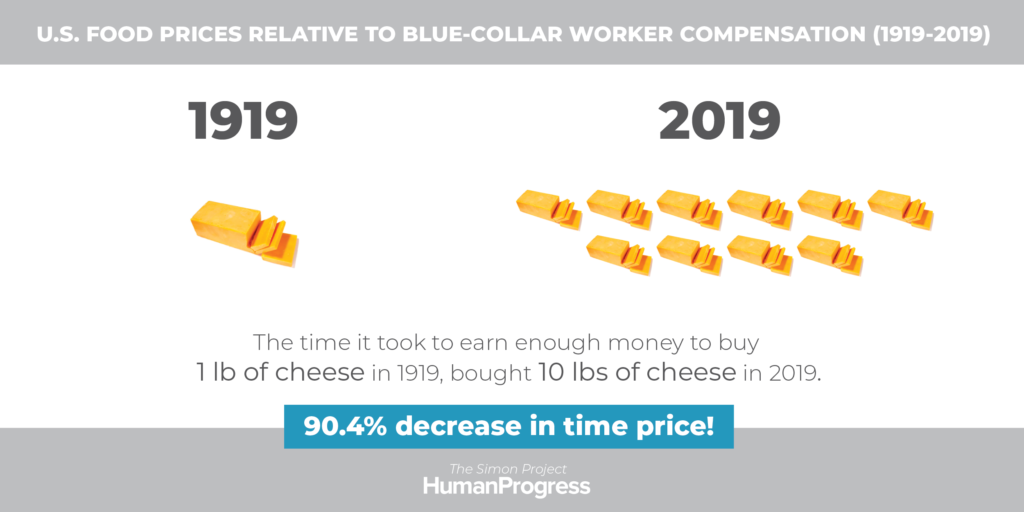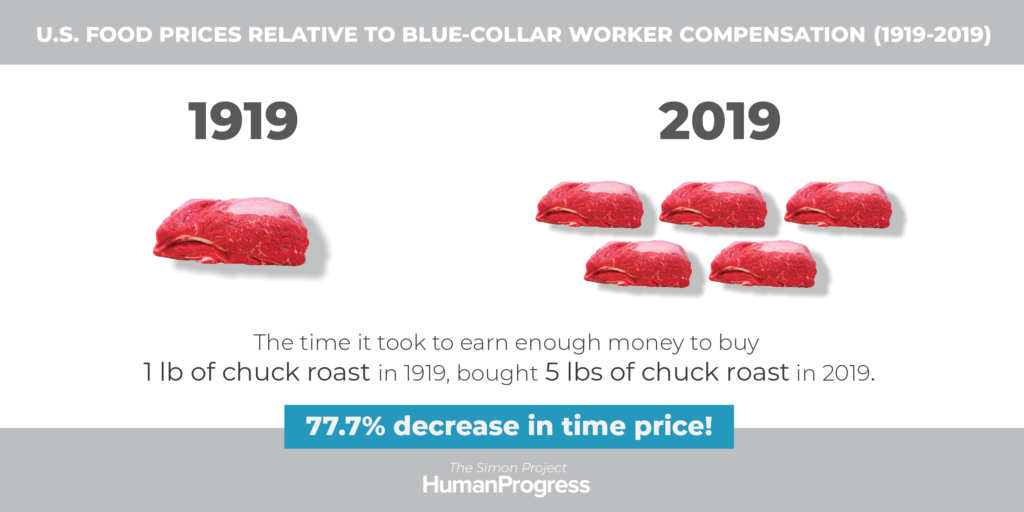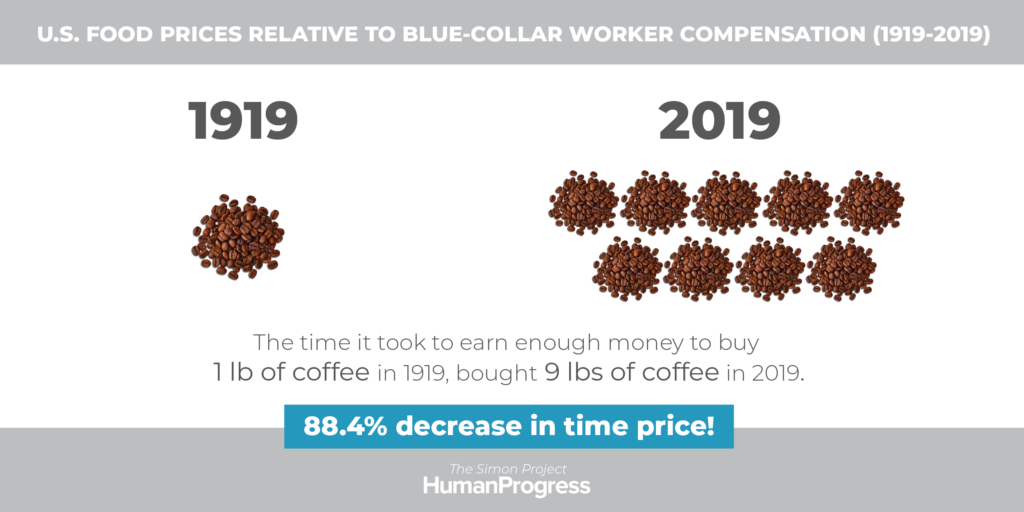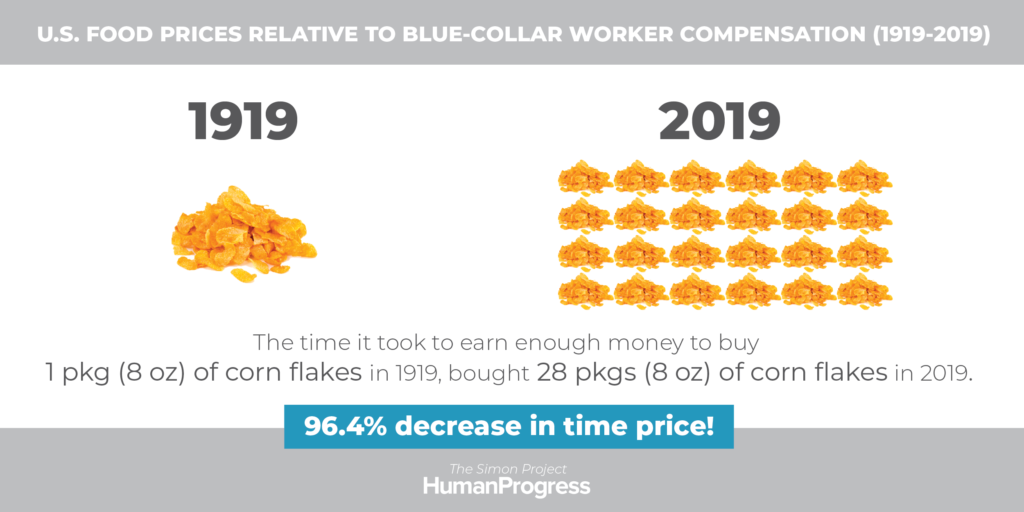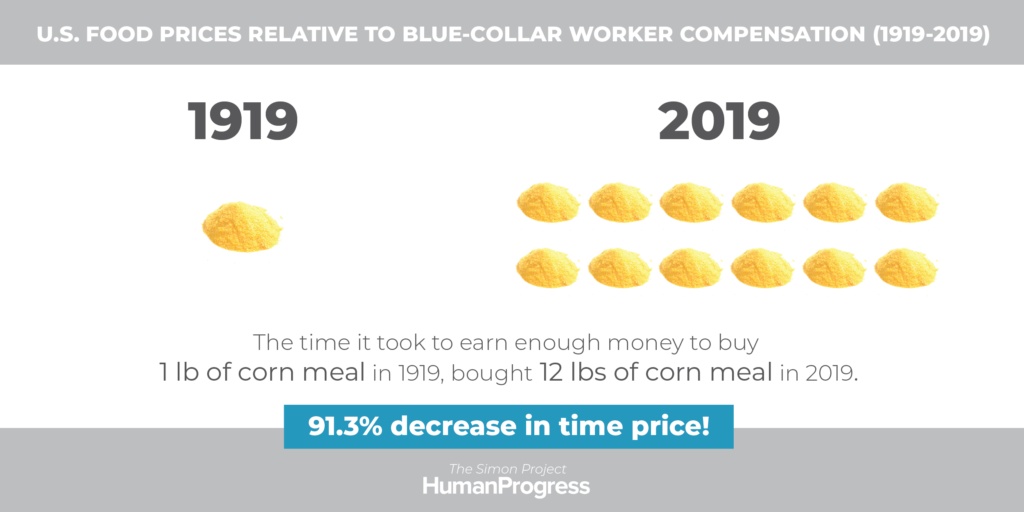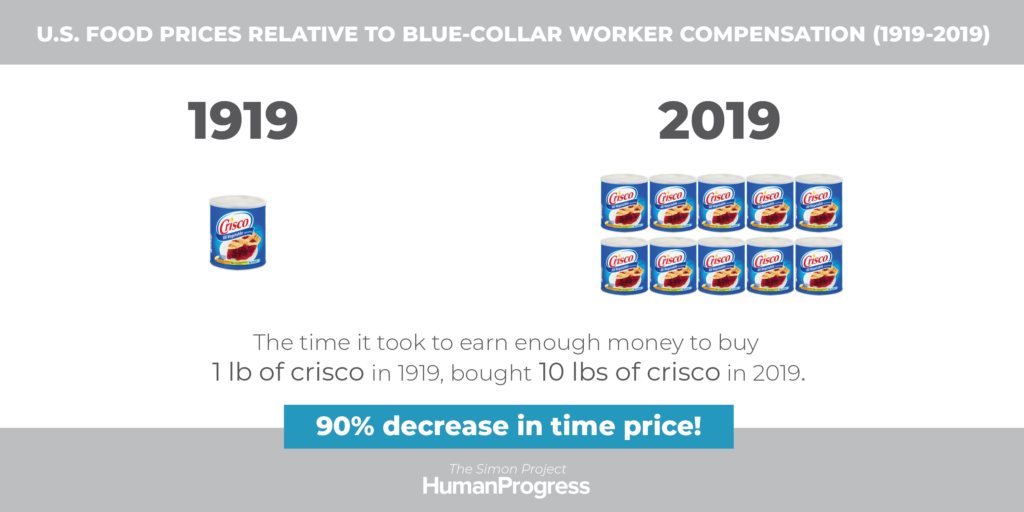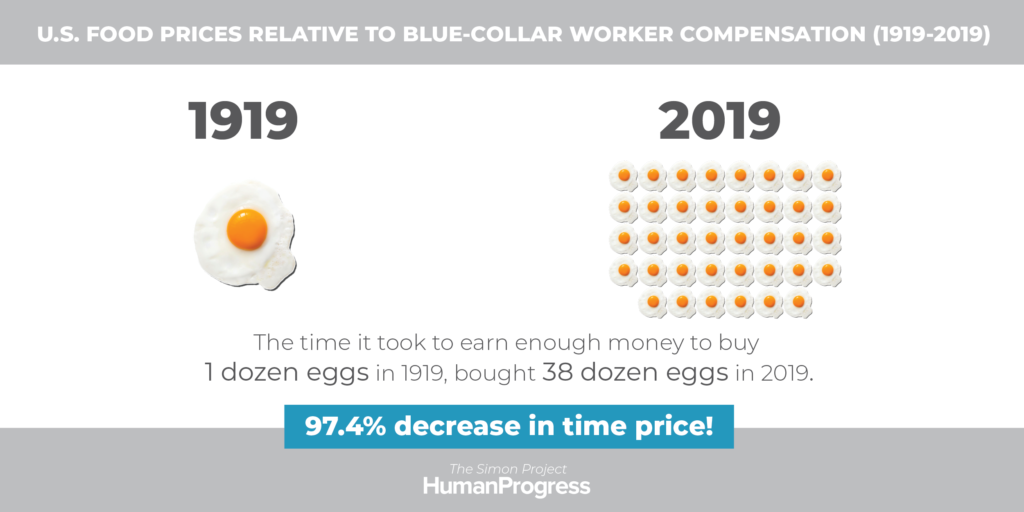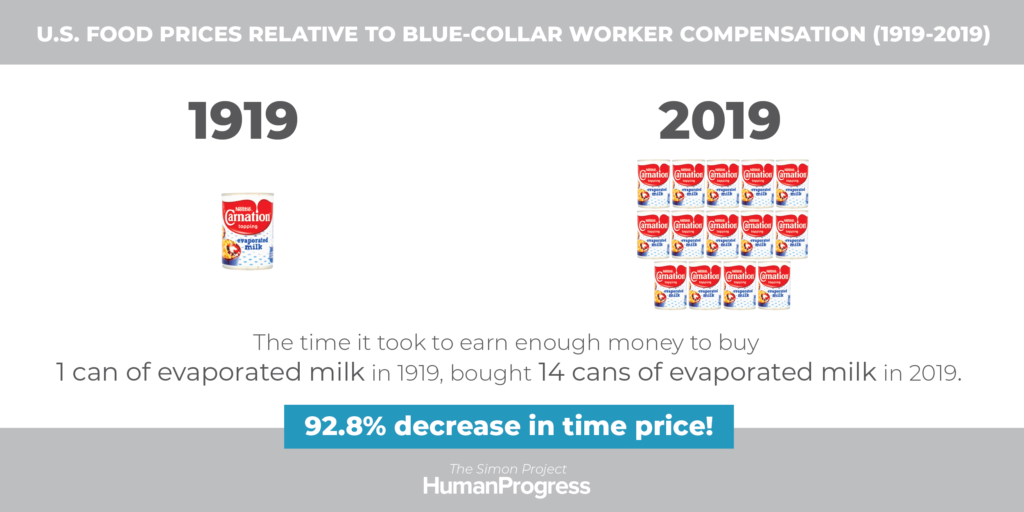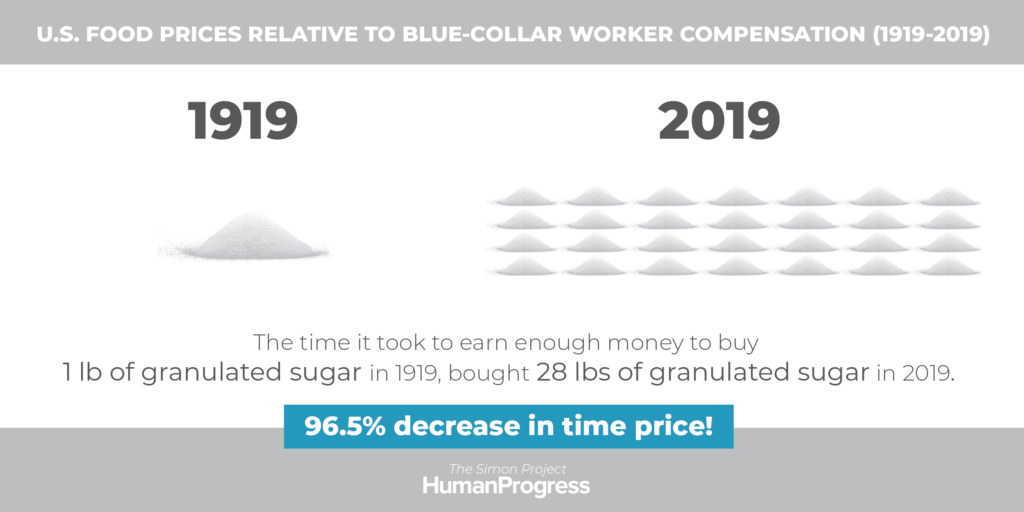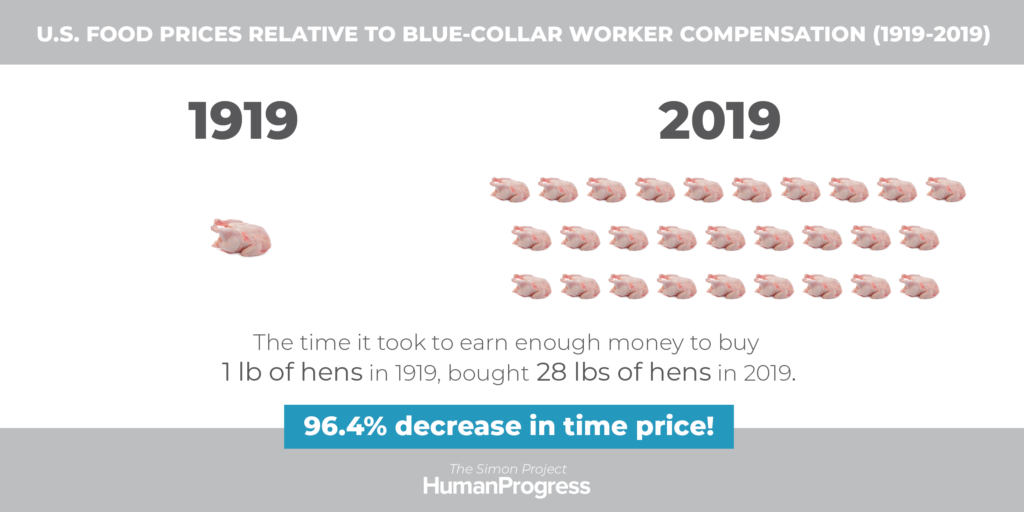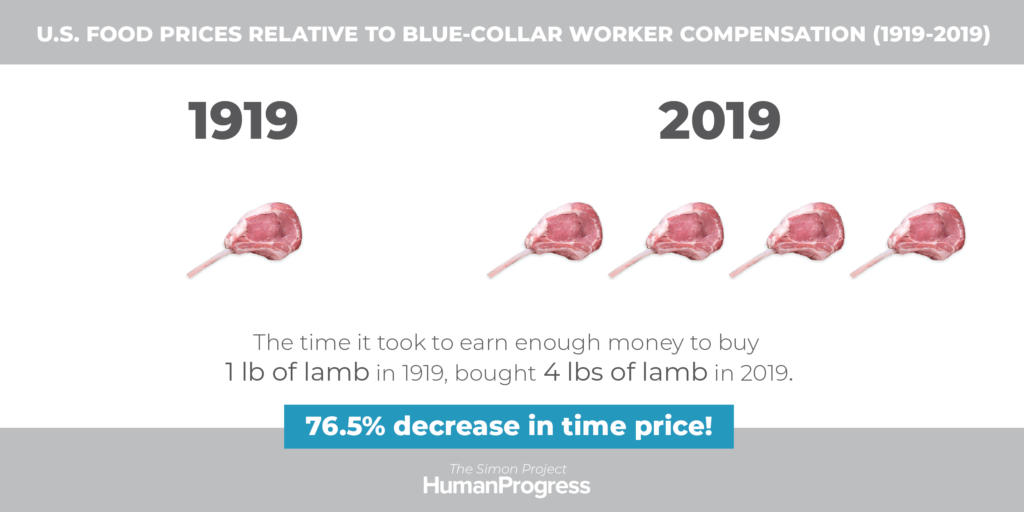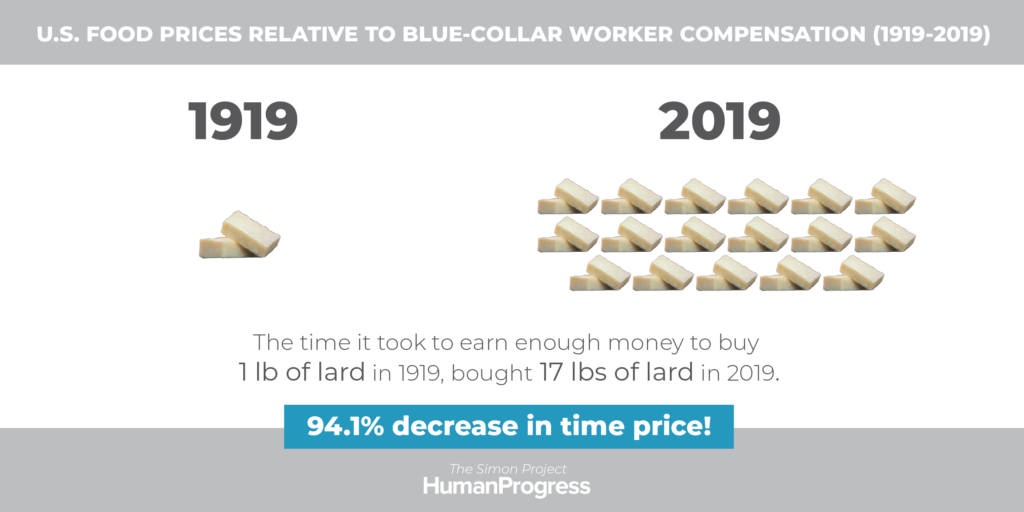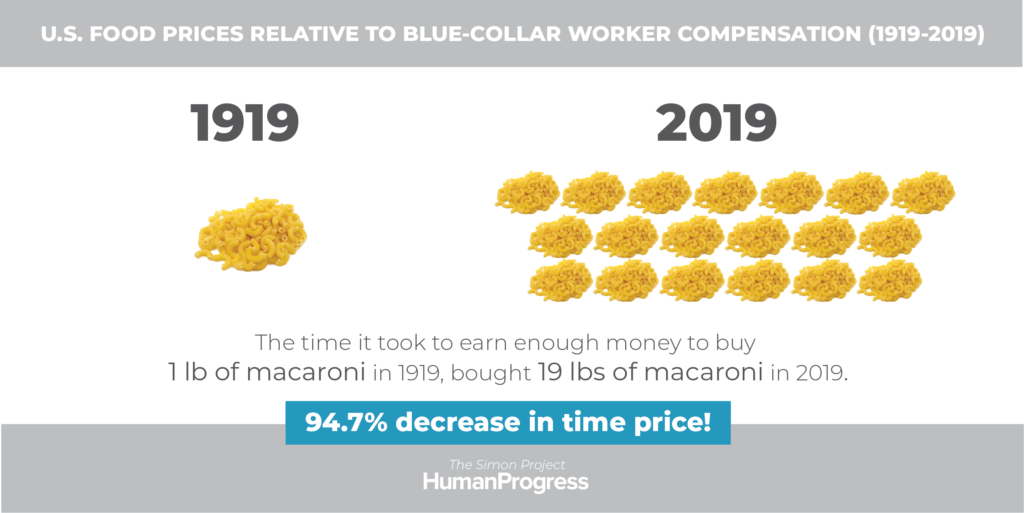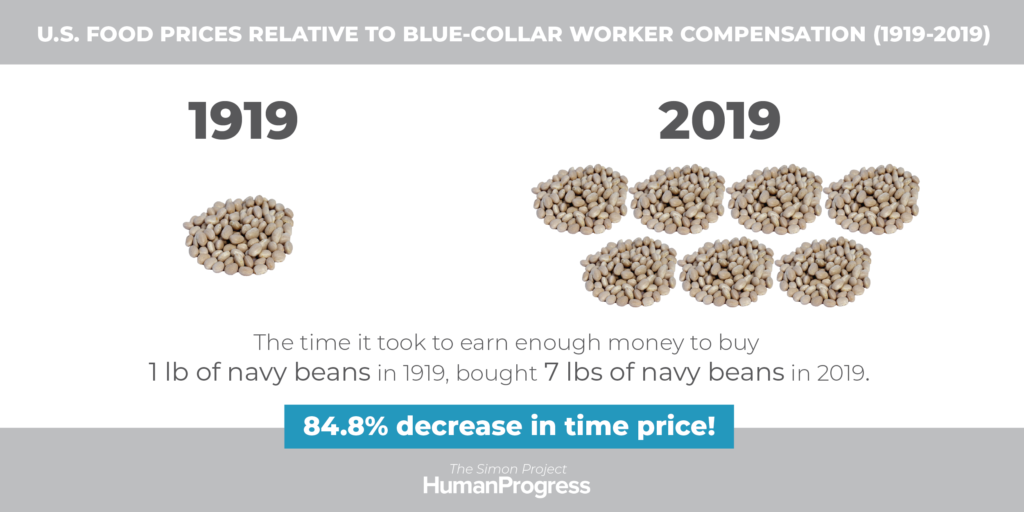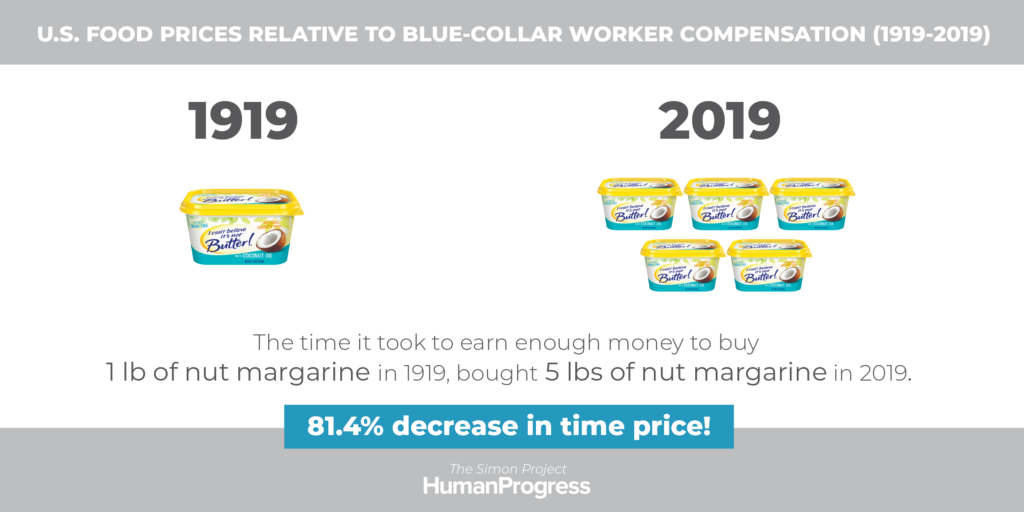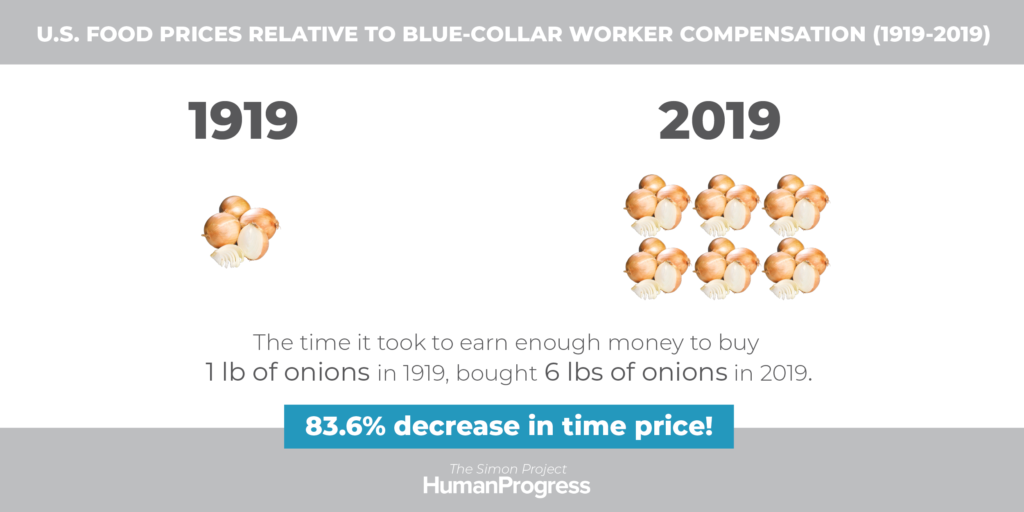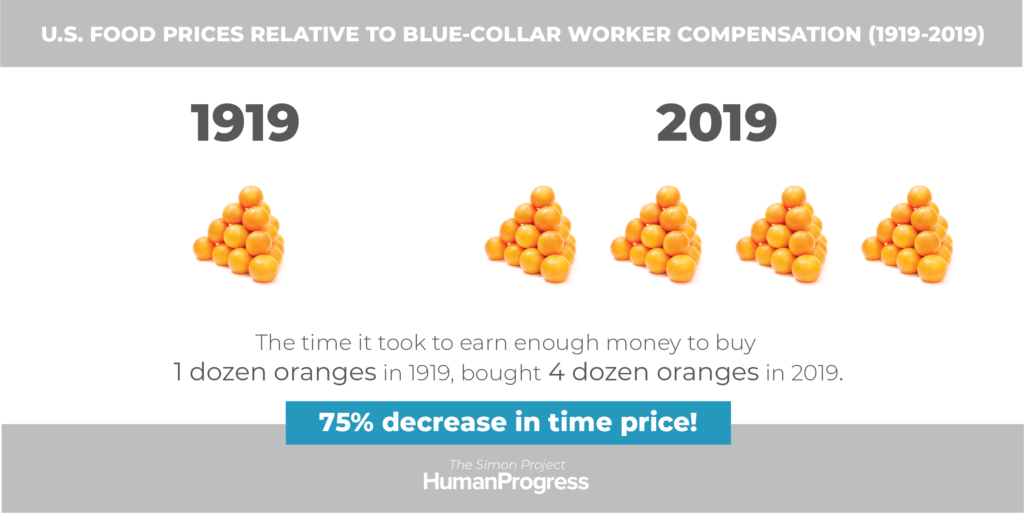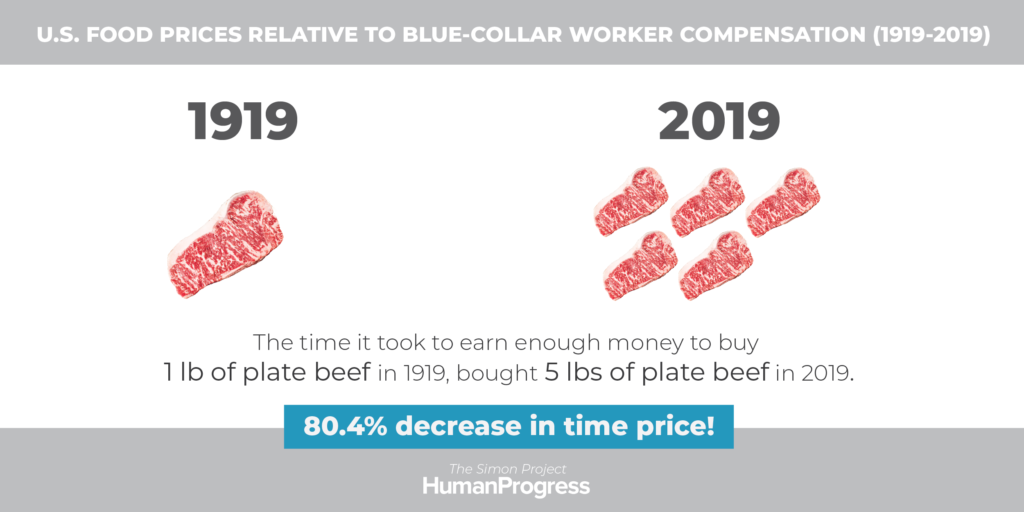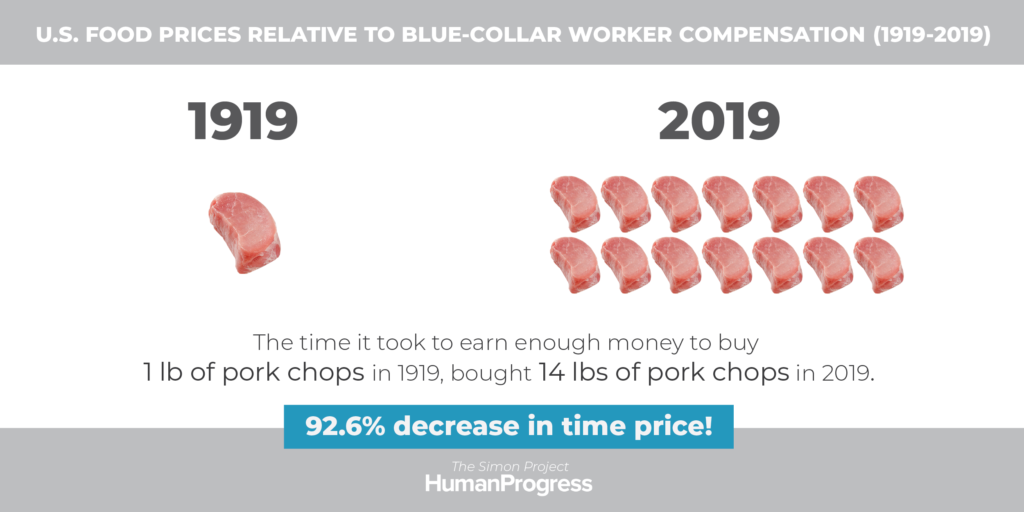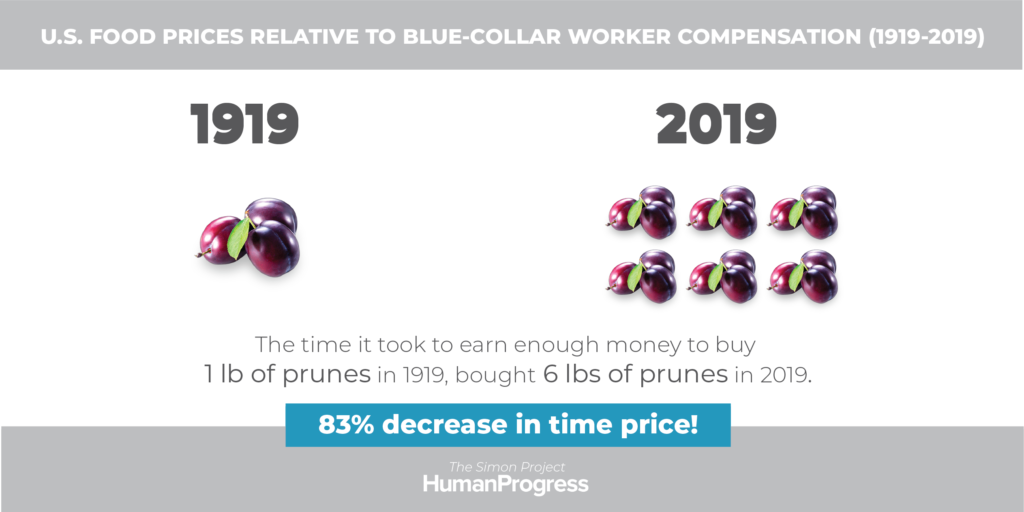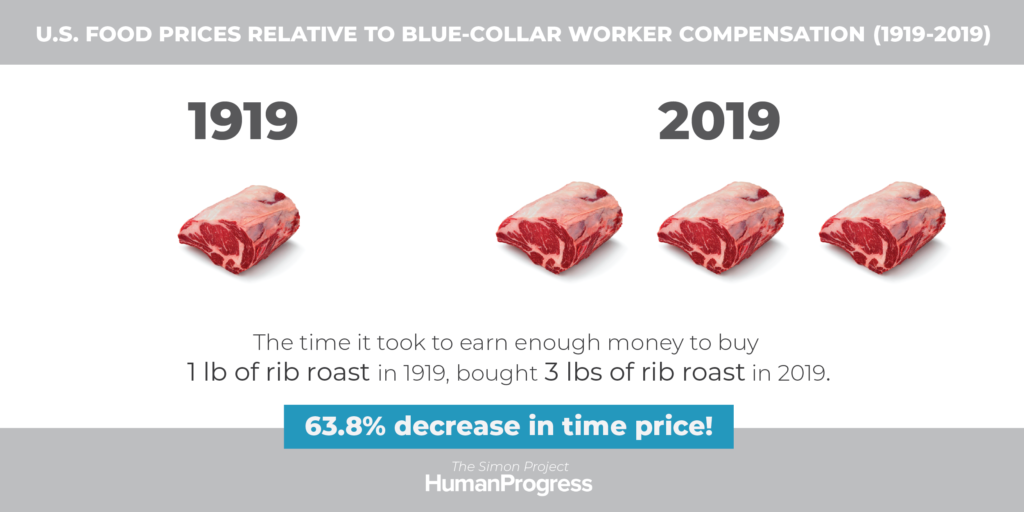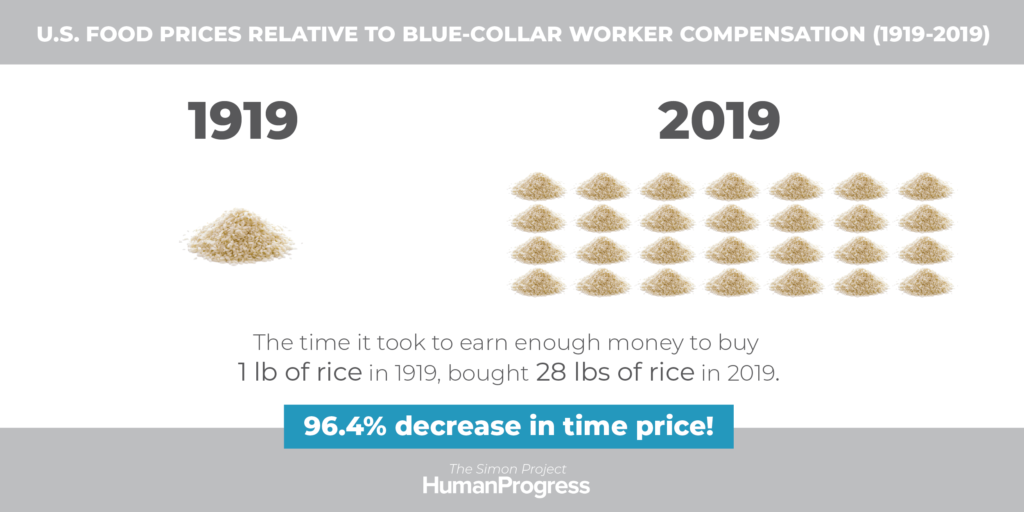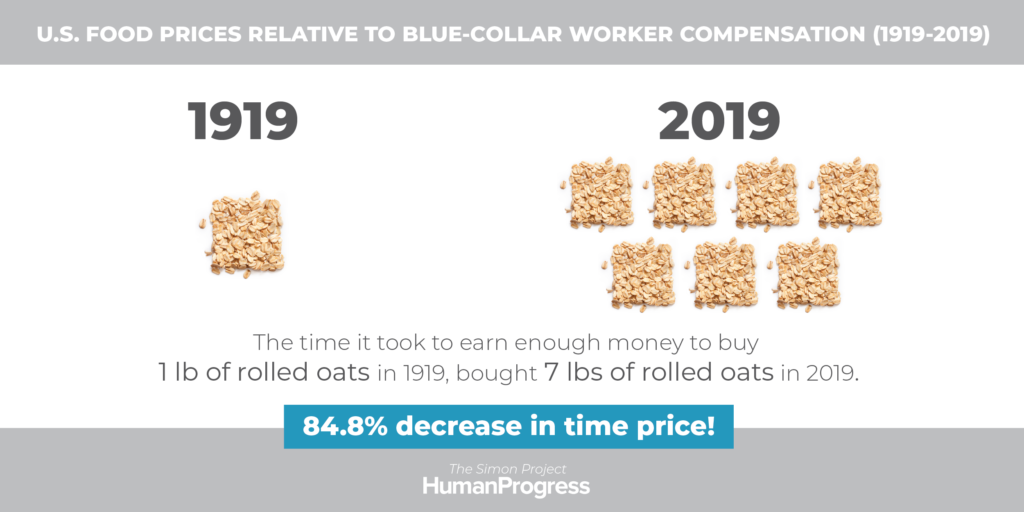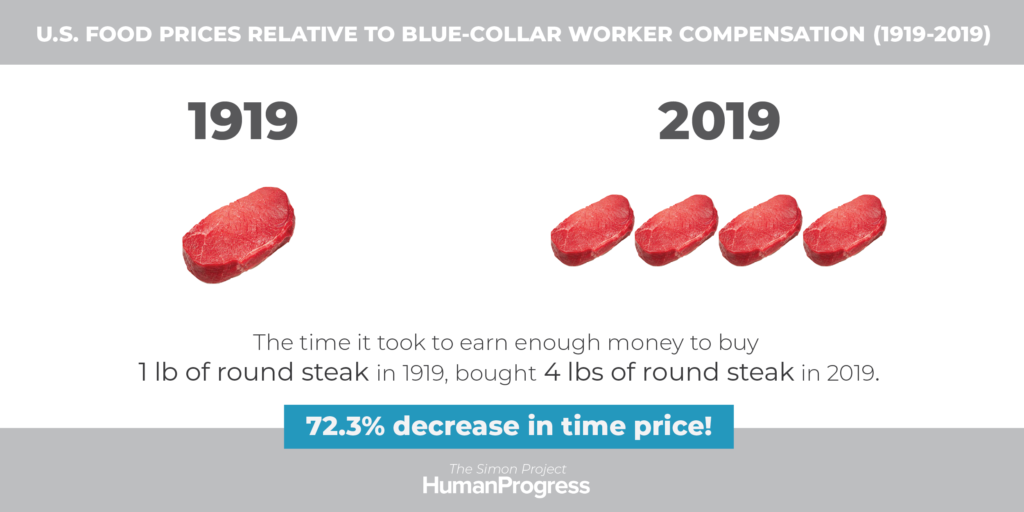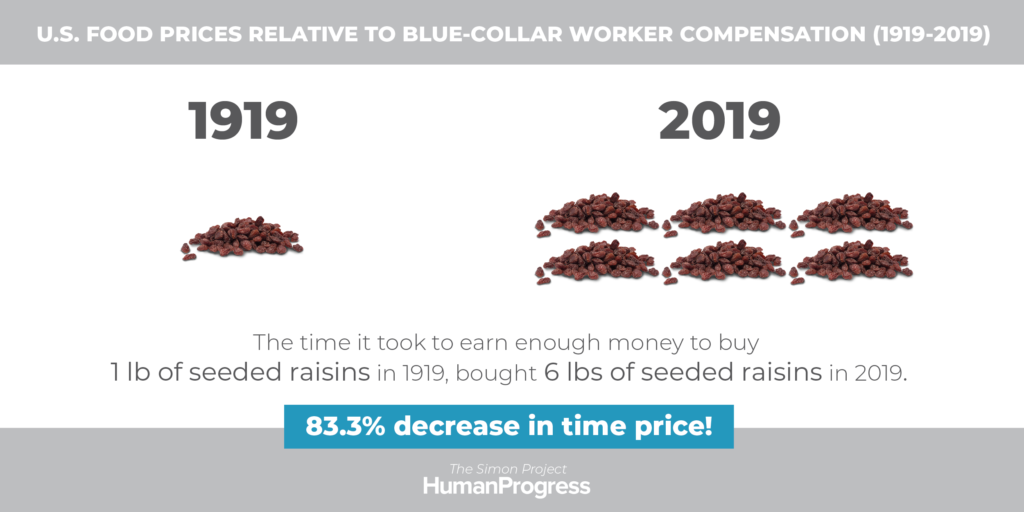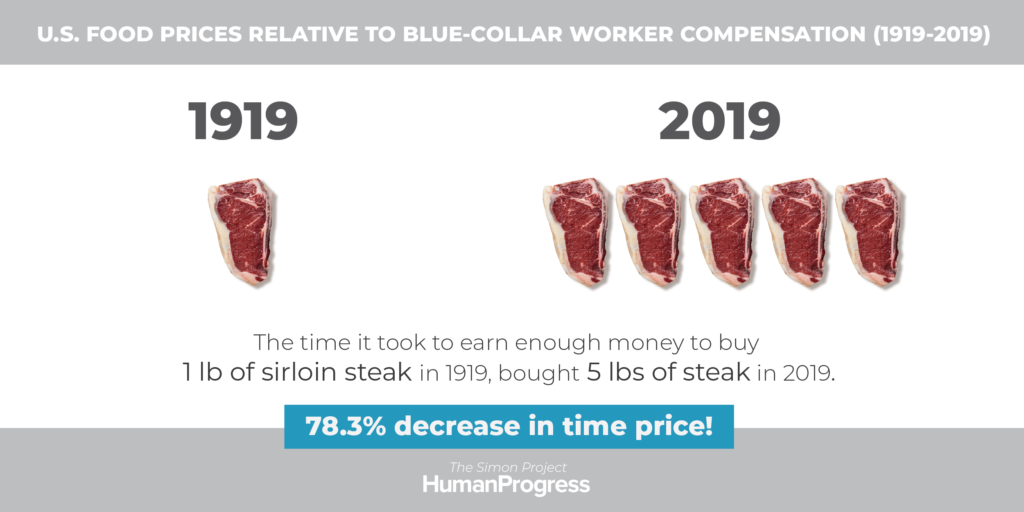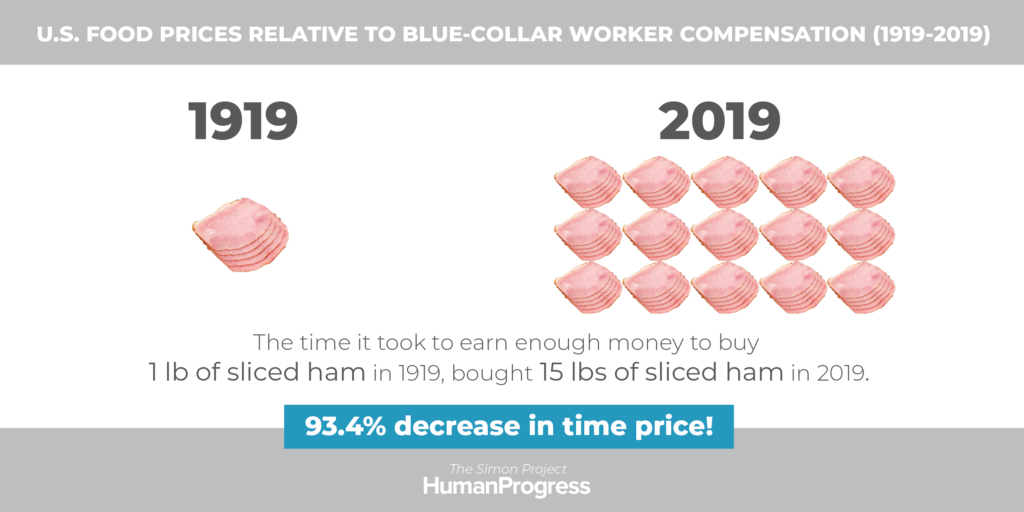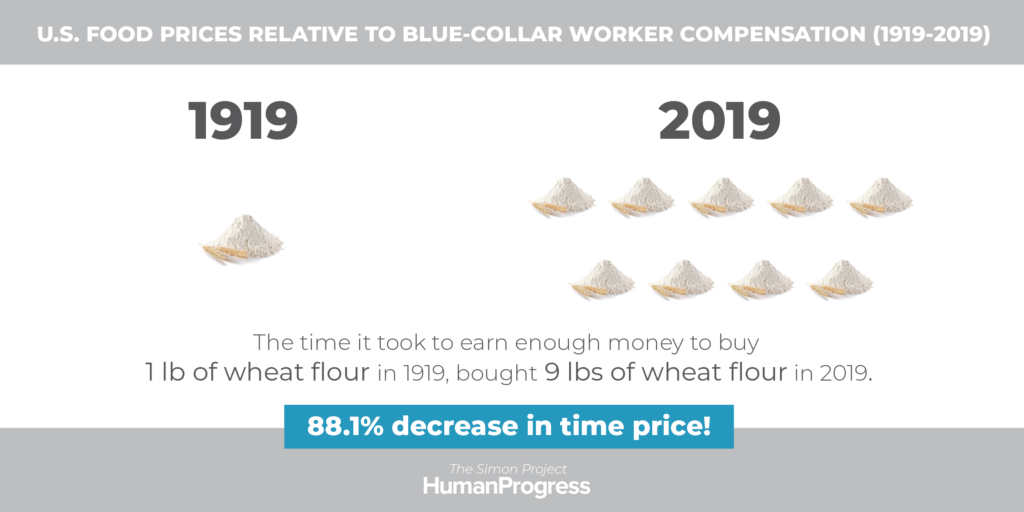On March 9, 2019, Congresswoman Alexandria Ocasio-Cortez (D-NY) stated that “Capitalism is irredeemable,” because “people can’t afford to live.” Is that true? The cost of living isn’t easy to calculate. The declining cost of home appliances, for example, needs to be juxtaposed with the growing cost of healthcare, etc. Here we focus on an expense that’s intimately tied up with the very survival of human beings – the cost of food.1 Throughout history, people lived on the edge of starvation. Yet in developed countries today, obesity is a growing problem. The growing abundance of food is partly responsible for that reversal.
Our analysis begins with 1919 prices of 42 food items, ranging from a pound of sirloin steak to a dozen oranges.2 We then express those 1919 prices in terms of hours of work.3The “time price” of a food item in 1919 denotes the length of time that a blue-collar worker had to work to earn enough money to buy that same item in 1919. We then look at the 2019 prices of the same food items (including, of course, the same quantity of those foods).4 We express those 2019 prices in terms of hours of work.5 As such, the time price of a food item in 2019 denotes the length of time that a blue-collar worker had to work to earn enough money to buy that same item in 2019.
Finally, we convert our time prices into an “abundance multiplier,” which tells us how much more (or less) of an item the blue-collar worker could buy with the same length of work. Note that declining time prices result in exponential, not linear, gains. Thus, a 75 percent decline in time price allows a person to purchase four items for the same length of work; a 90 percent decline results in ten items; a 95 percent decline in 20 items; and a 96 percent decline in 25 items, etc.
We find that for the same length of work that allowed a blue-collar worker to purchase one basket of 42 food items in 1919, he or she could buy 11.73 baskets in 2019. The compounded rate of “affordability” of our basket of food items rose at 2.49 percent per year. That means that a blue-collar worker saw his or her purchasing power double every 28 years.
1 Written by Gale L. Pooley and Marian L. Tupy, co-authors of The Simon Project – an initiative of humanprogress.wpengine.com.
2 See Retail Prices, 1913 to December 1919: Bulletin of the United States Bureau of Labor Statistics, No. 270, pages 176-183.
3 The hourly wage of blue-collar workers, which we derived from www.measuringworth.com, amounted to $0.43 per hour in 1919.
4 The 2019 nominal prices come from www.walmart.com.
5 According to our calculations based on data from www.measuringworth.com, the nominal wage rate of blue-collar workers amounted to about $34.33 per hour in 2019.
